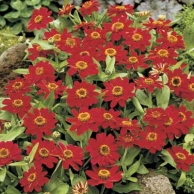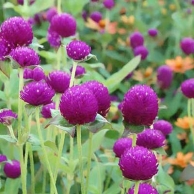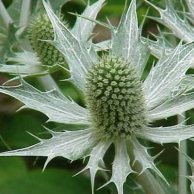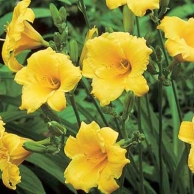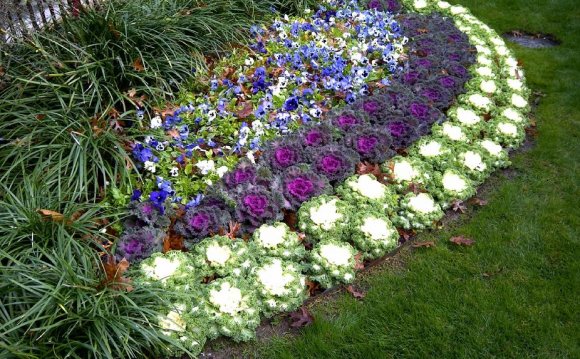
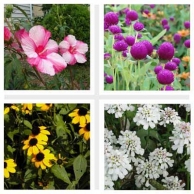 1 ×
1 ×
Blooms You Can Bet On
No doubt you've heard that a well-designed garden should include plants prized for their striking foliage, as well as some that produce fall color or berries, and others that provide good structure in winter. But lets face it: most of us want flowers. Lots of them. All the time. That's where the plants listed below come in. They'll churn out blooms for weeks on end this summer. In most cases, you can harvest armloads to fill vases or give away, and still have plenty left to enjoy in your garden beds long past Labor Day.
2 ×
Perennial Hibiscus (H. moscheutos)
(H. moscheutos)">
Also known as rose-mallow and swamp hibiscus, this garden standout was bred from wildflowers native to the East and South. Huge red, pink or white flowers can be as much as a foot across on stems that range from 2 to 8 feet high, depending on the variety. Flowers bloom from late spring until frost. Stems die back to the ground each winter.
3 ×
Purple Wave Petunia (Petunia F1 'Wave Purple')
(Petunia F1 'Wave Purple')">
Before 1995, when this hybrid was named an All-America Selection winner, gardeners thought of petunias as upright plants. Purple Wave petunias (and later Wave introductions in pinks and lilac) are more like vines—perfect for growing in hanging pots, along retaining walls or even as a ground cover.
4 ×
Profusion Zinnias (Z. hybrida)
(Z. hybrida)">
Grow zinnias if you want to be able to cut armloads of flowers for bouquets and still have a bright band of color alongside a path or a lawn. All zinnias thrive in hot weather, but Profusion zinnias keep on blooming well into fall, whatever the weather. Profusion White, Orange and Cherry, which have daisy-like flowers, each have won multiple garden awards. If you want fluffy pom-poms, look for double Profusion varieties in cherry, gold, white and "fire, " an orange-red.
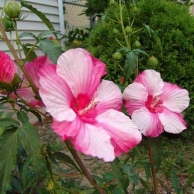 5 ×
5 ×
Globe Amaranth (Gomphrena globosa)
(Gomphrena globosa)">
For year-round enjoyment, these clover-like flower heads are hard to beat. The papery flowers last a long time in the garden and in fresh bouquets, and the blooms are easy to dry for use in wintertime arrangements. Depending on the variety, flowers are white, red, pink, lilac or purple. 'Strawberry Fields, ' with bright red blossoms, and 'All Around Purple' are two standouts.
6 ×
Sea Holly (Eryngium)
(Eryngium)">
If you want to add contrast to a flowerbed or to fresh or dried flower arrangements, this dramatic spiky plant is a great choice. It resembles thistle, but the flower colors blend in more with the prickly blue-green leaves, which are often streaked with silver. Alpine sea holly (E. alpinum) is a deep steel blue, while E. amethystinum is more silvery blue. Miss Willmott's Ghost (E. giganteum) produces especially striking conical flowers, each surrounded by a wreath of silvery, spikey bracts.
7 ×
Stella de Oro Daylily (Hermerocallis)
(Hermerocallis)">
Tough and trouble-free, daylilies produce showy flowers above a mound of sword-shaped leaves. Whether in the garden or in a vase, each blossom lasts just one day; they are daylilies, after all. But each stem holds numerous buds that open on successive days. Low-growing Stella de Oro keeps churning out new stems with a profusion of golden-yellow blossoms for up to five months, far longer than most daylilies.
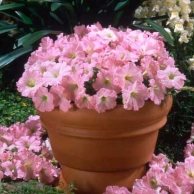 8 ×
8 ×
Evergreen Candytuft (Iberis sempervirens)
(Iberis sempervirens)">
Small clusters of delicate white flowers appear in low-growing clumps in spring, and continue into the fall. The shiny, dark-green leaves stay on all winter, so the plant remains attractive year-round.
9 ×
Brown-Eyed Susan (Rudbeckia)
(Rudbeckia)">
Brilliant yellow or orange flowers with a raised brown polka-dot center stand out in a perennial border. R. hirta varieties bloom from seed the first year and are grown as annuals; in the warmest areas, they're wintertime bloomers. Most other kinds are perennial and gradually form showy, spreading clumps as hardy as their wildflower ancesters, native to the East. All are good cut flowers as well. One to search out: R. fulgida var. sullivantii 'Goldsturm, ' an especially flower-covered variety.
10 ×
Joe Pye Weed (Eupatorium species)
(Eupatorium species)">
Despite the scary name, this is a lovely wildflower native to our Eastern meadows that draws butterflies and birds. One especially showy variety, E. maculatum 'Gateway, ' has wine-red stems 5 to 7 feet tall, topped by dusky rose nosegays a foot across. Use as a tall anchor in a perennial bed or as a temporary screen, since stems die back to the ground in winter.
11 ×
Purple Coneflower (Echinacea purpurea)
(Echinacea purpurea)">
Pink to purple daisy-like flowers about 4 inches across cover this perennial from mid-summer into autumn. The plant is especially hardy and unfussy, and you can divide clumps after several years to get new plants. The flowers draw butterflies and last well as cut flowers. 'PowWow Wild Berry, ' which has rosy pink flowers, was chosen as an All-America Selections winner for 2010.
12 ×
Sunflowers (Helianthus annuus)
(Helianthus annuus)">
With large, easy-to-plant seeds and magnificently showy flowers, sunflowers are perhaps the perfect flower for kids to grow. Classic single-stem kinds such as 'Mammoth Russian' and 'Russian Giant' grow 10-15 feet tall and produce plate-size flowers with edible seeds. Newer, shorter kinds include 'Ring of Fire, " which is about 4-5 feet tall and has 5-inch flowers that work in a vase, and 'Sunspot, ' which grows just 2 feet tall. 'Indian Blanket' is a branching kind with numerous smaller flowers suitable for cutting. Sunflower blooms face the sun, so choose a bed where the sun will be behind you.
